The Top 8 Must-Have Tools for Electronic Makers
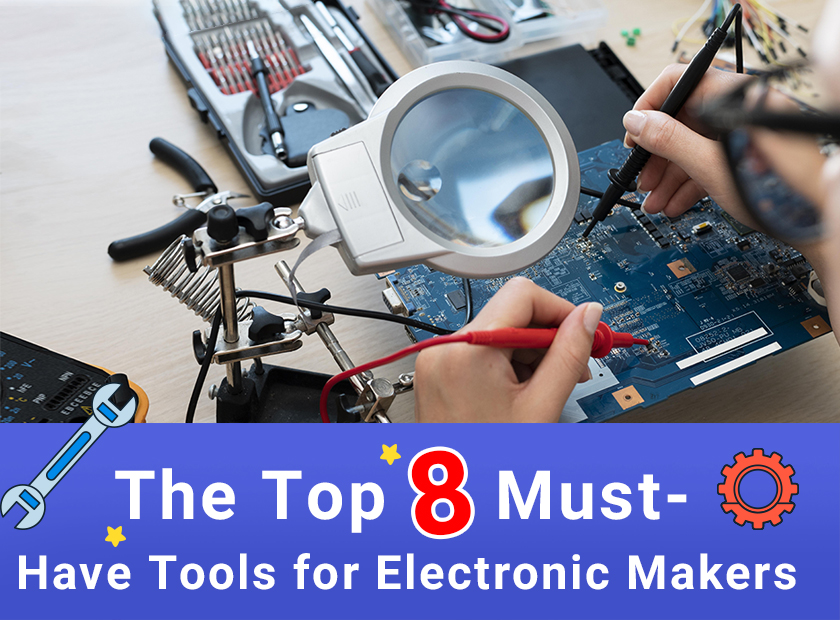
If you're an electronics maker or hobbyist, having the right tools can make all the difference in your projects. With the right tools, you can make precise measurements, solder and desolder components with ease, and troubleshoot any problems that may arise. In this blog, we'll cover the essential, complementary, and advanced tools that every electronics maker or hobbyist should have in their toolkit.
Soldering Iron and Solder
Soldering is the process of joining two pieces of metal with a filler alloy that has a melting point below 840°F (450°C); the soldering iron is used to make these joints, and the alloy used to make them is solder.
Choosing a soldering iron with at least 30 watts of power is a better choice because low wattage irons usually take longer to heat up and cannot maintain a certain temperature for a long time, also the tip compatibility should be considered when you choose a soldering iron for you. Some tips wear out after long use, so choose the soldering iron with interchangeable tips, while the iron should also be compatible with different tips.
Adjustable temperature: Depending on the wires or electronics you are working with, the iron's heat should be adjustable. Some delicate electronics, such as those found in some appliances or gadgets, may require a lower temperature, and some projects may require solder with a lower melting point.
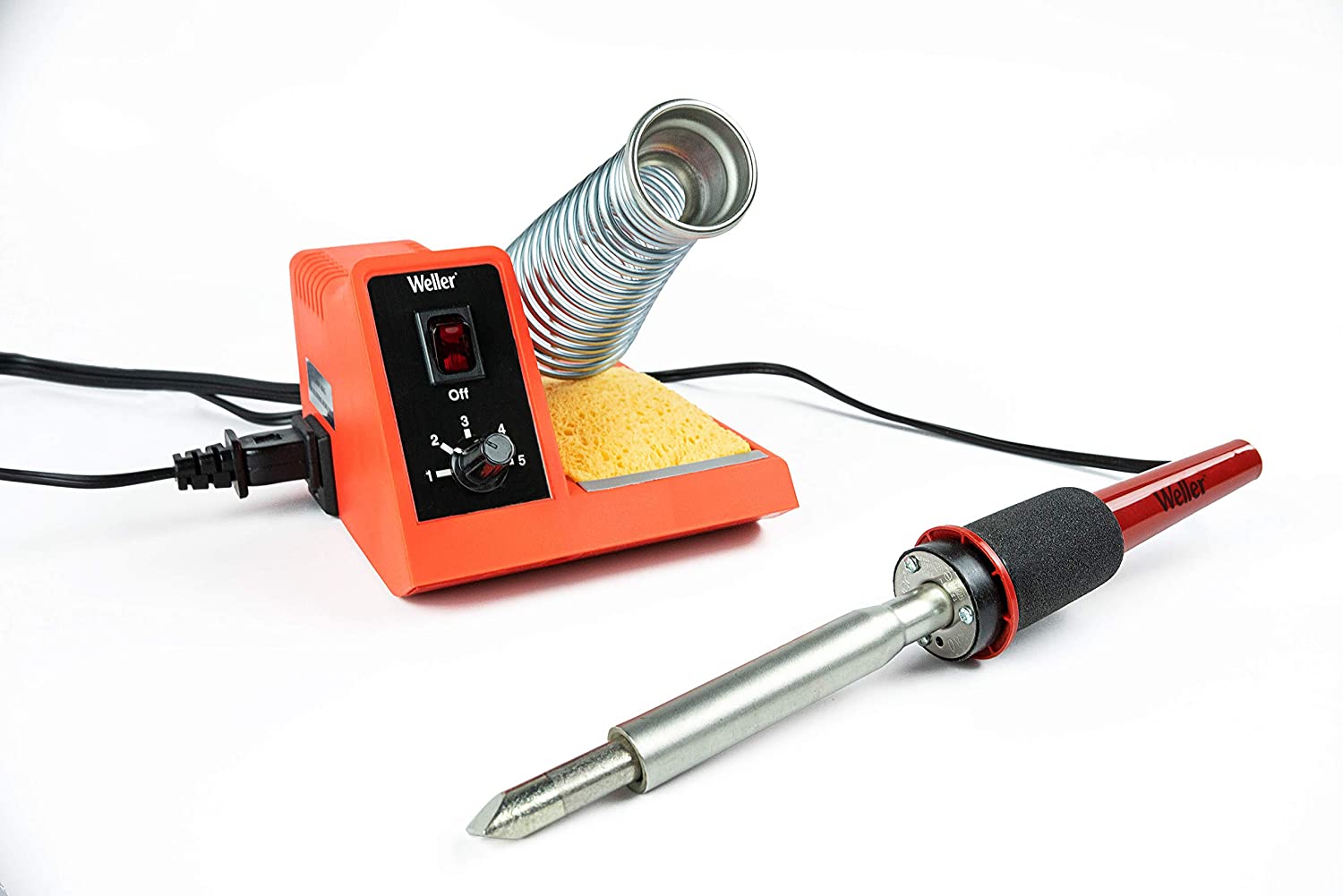
Wire Cutters and Strippers
Wire cutters and strippers are really necessary tools for DIY electronics makers to cut and strip electrical wire, they can make makers conduct clean and precise connections between different electronic components and are commonly used in electrical work, electronics, and other applications where wires need to be cut and prepared for use.
Wire cutters are used to cut wire to the desired length. They come in different sizes and shapes depending on the thickness of the wire and the type of cut required. Some wire cutters have sharp blades that can cut through thick wire, while others have a scissor-like action that is more suitable for thin wire.
Wire strippers are used to removing the insulation from the ends of electrical wires to expose the metal wire underneath. This is necessary for making electrical connections, such as splicing wires together or connecting wires to terminals or connectors. Wire strippers come in different sizes and shapes to match the size and shape of the wire being stripped.
Some wire cutters and strippers are combined into a single tool that can both cut and strip wire. These tools often have multiple cutting and stripping holes to accommodate different wire sizes and types.
Overall, wire cutters and strippers are essential tools for anyone working with electrical wire. They provide precise, clean cuts and make it easy to prepare wires for use in electrical connections.
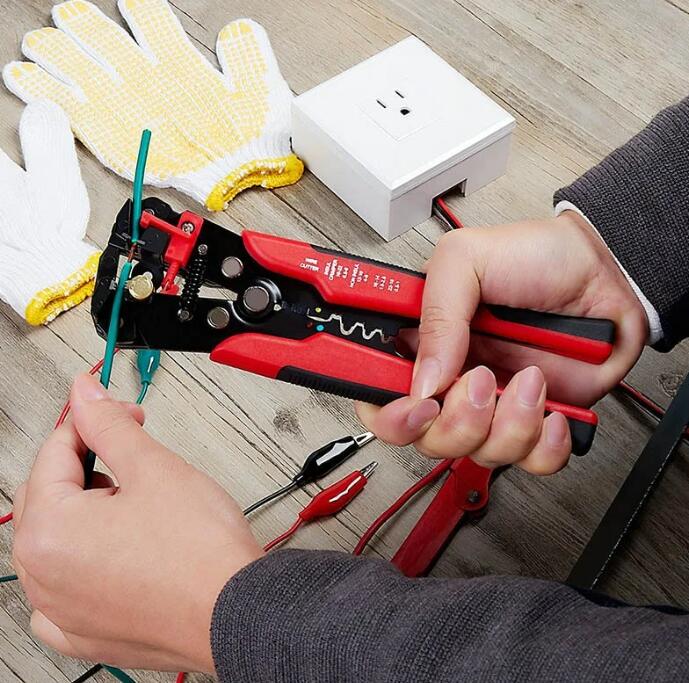
Multimeter
A multimeter is a versatile electrical measuring instrument that combines several functions in one device. It is used to measure electrical quantities such as voltage, current, and resistance. For example, it can be used to measure the voltage of a battery, the current flowing through a component, or the resistance of a wire. It can also be used to test continuity, check diodes, and measure capacitance. The multimeter typically consists of a digital or analog display, probes, and a selector switch to choose the type of measurement.
There are two types of multimeters: analog and digital. Analog multimeters have a needle that moves across a scale to indicate the reading, while digital multimeters display the reading on a digital screen. Digital multimeters are more accurate and easier to read than analog multimeters.
Multimeters are essential tools for anyone working with electronics, from professional electricians to hobbyists. They are used to diagnose and troubleshoot electrical problems and to verify the proper operation of electrical equipment.
In short, a multimeter is a versatile and essential tool used to measure electrical characteristics in a variety of applications.

Oscilloscope
An oscilloscope is an electronic instrument that measures and displays voltage over time. It's a tool commonly used in electronics, telecommunications, and other fields to analyze and troubleshoot electrical circuits. An oscilloscope works by measuring and graphing the voltage of an electrical signal over time. The voltage is measured by a probe connected to the circuit under test. The oscilloscope then displays the voltage as a graph on its screen, with time on the horizontal axis and voltage on the vertical axis.
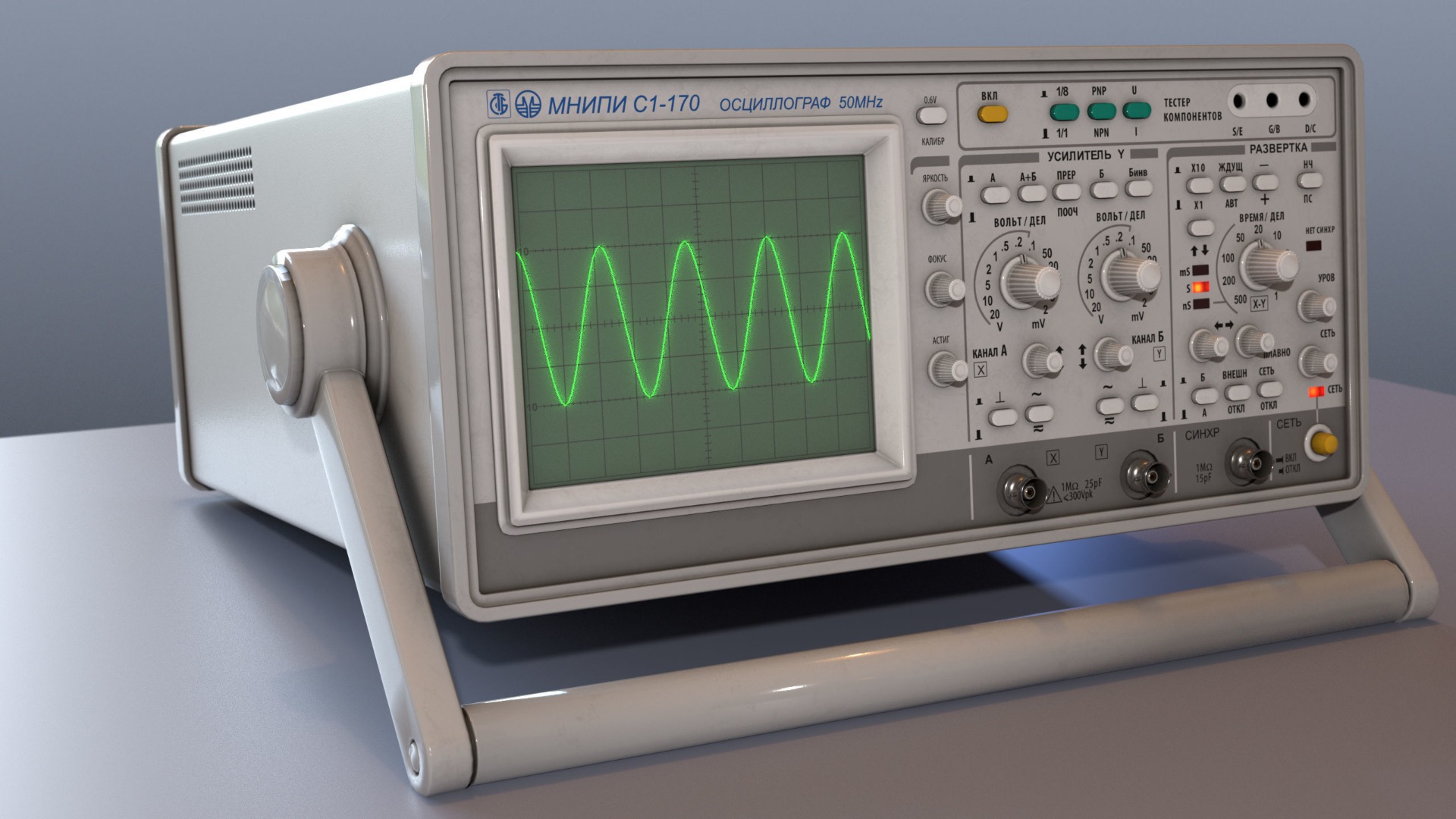
Oscilloscopes can be used to measure a wide range of electrical signals, including AC and DC voltage, frequency, and phase. They can also be used to measure other properties of electrical signals, such as rise time, fall time, and duty cycle.
Oscilloscopes come in a variety of sizes and configurations, with different features and capabilities. Some oscilloscopes are handheld and portable, while others are large and designed for use in a laboratory or industrial setting. Some oscilloscopes have advanced features, such as the ability to trigger on a specific event or display multiple signals simultaneously.
In short, an oscilloscope plays a vital role in DIY electronics projects for makers and enthusiasts who work with electrical circuits. It allows you to visualize and analyze electrical signals, making it easier to troubleshoot problems and optimize circuit performance.
Breadboard
A breadboard is a tool for prototyping electronic circuits. It allows you to quickly and easily connect components together without soldering. Breadboards are often used by electronics hobbyists and engineers to test and design electronic circuits before soldering them to a printed circuit board.
As a plastic board with a grid of holes arranged in rows and columns, the breadboard has holes connected by metal strips hidden under the plastic surface, which is very convenient for DIY electronics makers to insert electronic components such as resistors, capacitors, and integrated circuits into the holes and connect them together by inserting wires or jumpers into the holes.
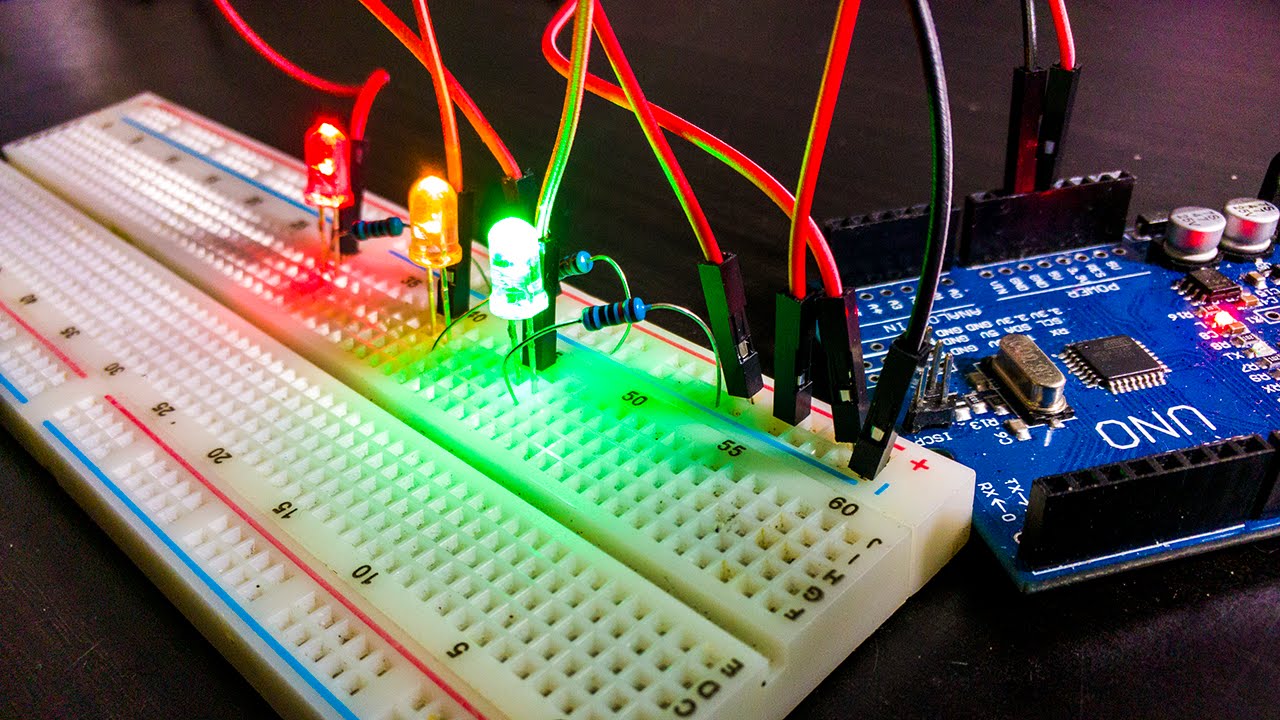
Breadboards come in different sizes, with larger breadboards providing more room for components and more connections, while some breadboards contain power rails, which are rows of holes connected to a power supply so you can easily power your circuit.
In summary, a breadboard is a useful tool for prototyping and testing electronic circuits. It allows you to quickly and easily connect and disconnect components without soldering, making it a useful tool for both beginners and experienced electronics enthusiasts.
Power Supply
A power supply is an electronic device that provides electrical power to an electrical load. In other words, it is a device that converts one form of electrical energy into another form that can be used to power electronic devices. Power supplies come in a variety of forms, including AC-DC adapters, DC-DC converters, and AC-AC transformers, and are used in a wide range of electronic devices, from small household appliances to large industrial equipment.
In electronic circuits, power supplies are used by do-it-yourselfers or engineers to provide a steady and controllable source of electrical power to the circuit. Many electronic components require a specific voltage or current to operate properly, so a power supply that ensures the circuit receives the correct amount of power, prevents damage to the components, and ensures proper operation is very important.
Power supplies can be either internal or external to a device. Internal power supplies are built into the electronic device and are not easily replaced. External power supplies, on the other hand, are separate devices that plug into an electrical outlet and provide power to the device via a cable.
In general, a power supply is an essential component of many electronic devices, providing a steady and controlled source of electrical power to the circuit.
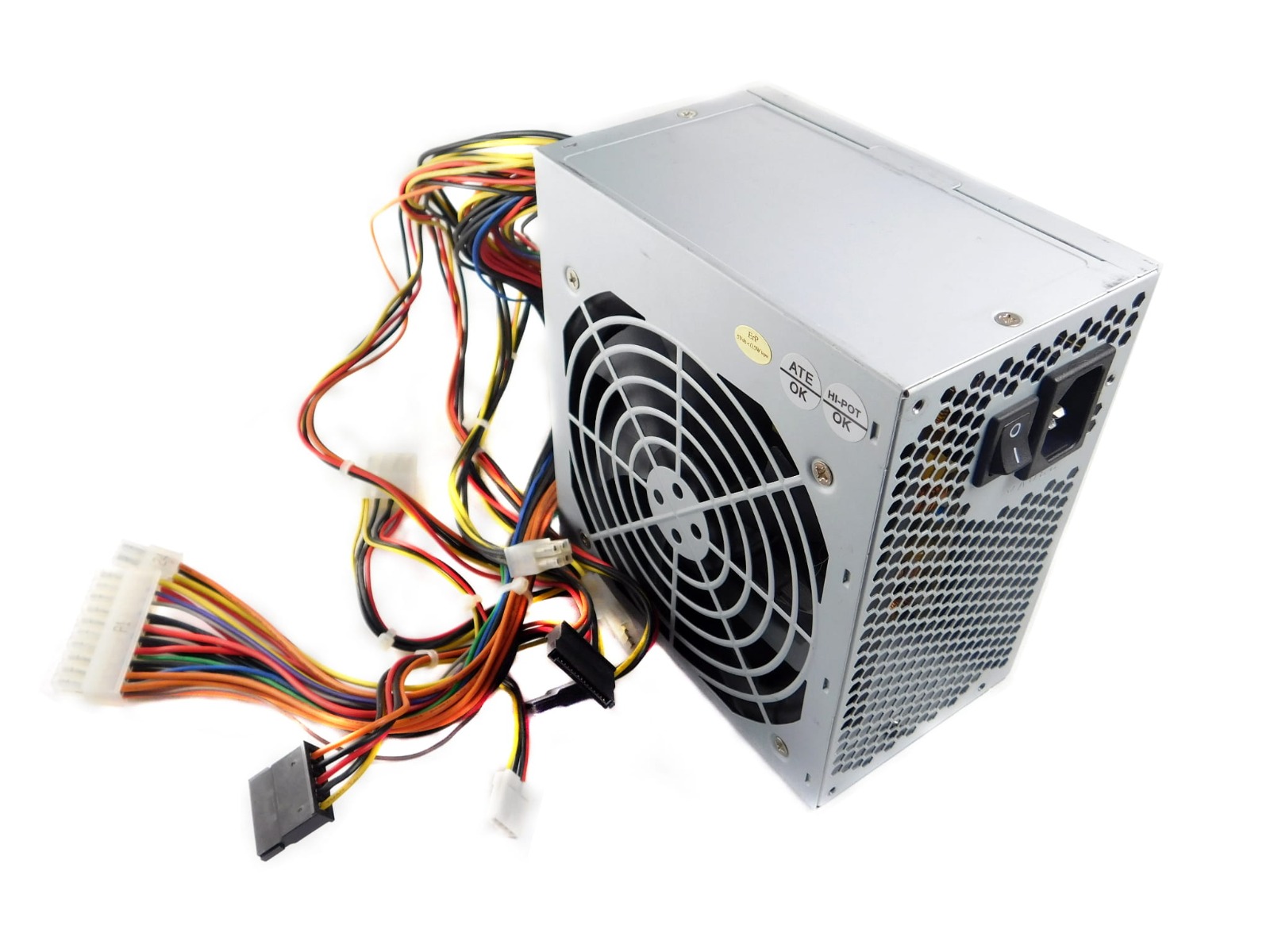
Third Hand Tool
The "third hand tool," a type of tool used in various industries such as electronics, jewelry making, and welding, is typically a small, adjustable tool consisting of two or more arms with alligator clips or other types of clamps attached to the ends. The tool is designed for makers, engineers to hold and stabilize small objects or components during operations such as soldering or assembly.
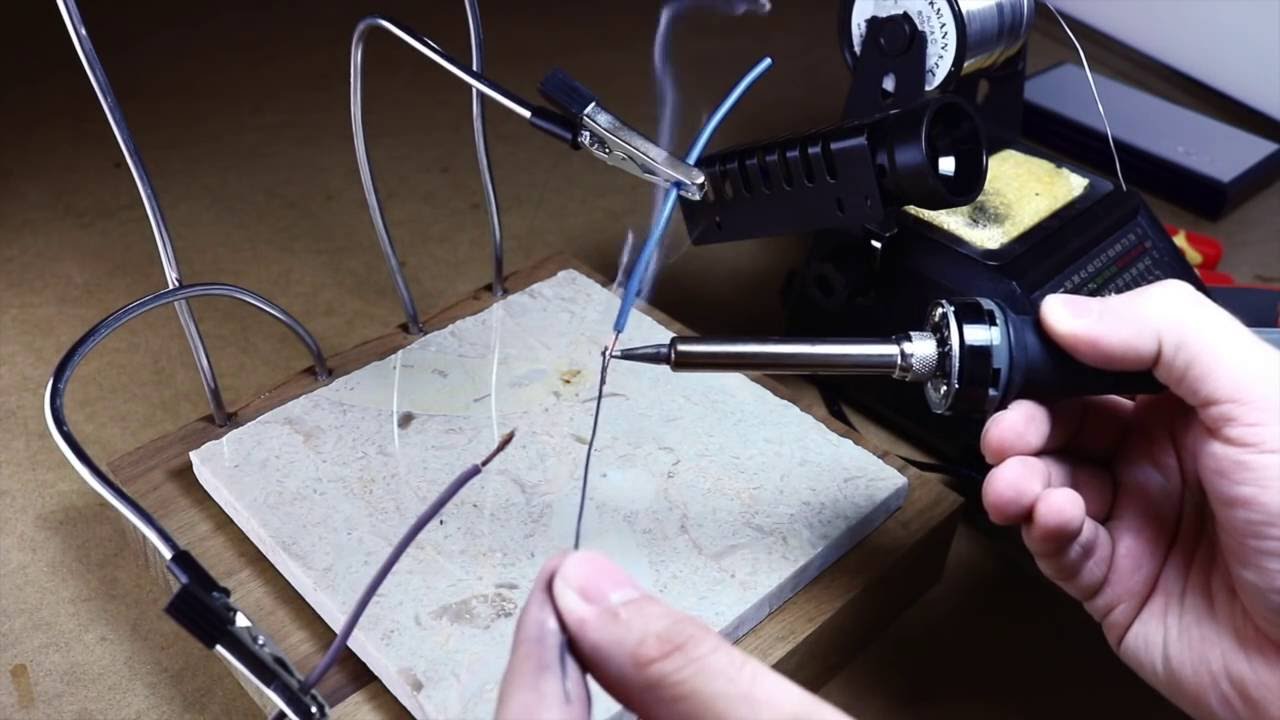
The name "third hand tool" comes from the idea that the tool acts as a third hand for the DIY electronic makers, allowing them to work more efficiently and effectively by holding and positioning objects that would otherwise be difficult to handle.
Third-hand tools are useful for anyone who needs to work with small objects or components that require precise positioning and stability. They are widely available and can be found in hardware stores, electronics stores and online retailers.
Heat Shrink Tubing
Heat shrink tubing is a type of tubing used to protect and insulate electrical wires and components. It is typically made from a thermoplastic material, such as polyolefin or PVC, that can be heated to shrink and conform tightly around the wires and components. It can protect wires and components from damage or corrosion, as well as provide strain relief and insulation. Commonly used in the automotive, aerospace, and marine industries, as well as in home and DIY electronics projects, heat shrink tubing comes in a variety of sizes, colors, and materials to accommodate different wire sizes and project needs. It can be purchased in pre-cut lengths or in rolls that can be cut to the desired length.
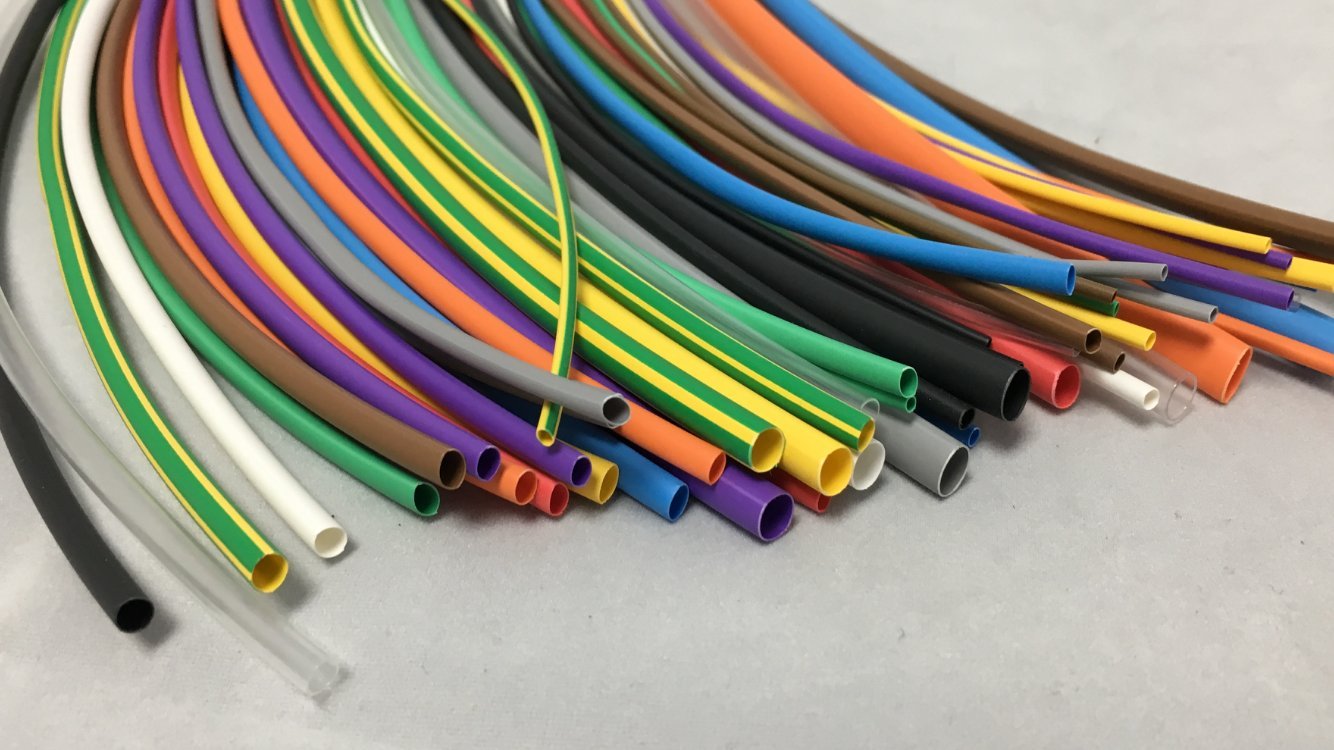
A maker can use heat shrink tubing by placing it over the wire or component and then heating it with a heat gun or other heat source until it shrinks and conforms tightly around the wire or component. The tubing may also have an adhesive liner that melts and adheres to the wire or component during the heating process, providing additional protection and insulation.
Final Words
Having the right tools is essential for any electronics DIY makers or hobbyist. They can take your projects to the next level. Choose the right tools to improve your electronics building efficiency and expand your electronics knowledge base.
Also, you can use these tools to build your own finished projects and even put them into mass production and sell them online for benefits, is this really amazing? Elecrow has launched a program called partner seller these days, it aims to provide any electronics maker or geek the platform to sell their DIY electronics projects or any creative electronics projects, welcome to join Our Partner Seller platform to earn your benefits here!
About Elecrow
Elecrow is a one-stop solution platform providing services to tech geeks and makers around the world, including PCB assembly, PCB manufacturing, and component sourcing. Elecrow can provide makers and electronics enthusiasts with the electronic parts they need to complete their projects.
Elecrow has strong supply chain sources and can provide you with a variety of components with high-quality and competitively priced components through multiple channels. From the resistor, capacitor, inductor, diode and triode, rectifier bridge, and IC to any type of connector, shell, wire/cable, and button, Elecrow can help you source them all. The service is designed to save you money and time so that you can concentrate on your work and not worry about sourcing issues.
Elecrow also provides a sales platform for DIY electronics makers and welcomes partner sellers to sell their products and earn benefits !
_________________________________________________________________________
Btw, Raspberry Pi boards are popular and versatile tools for makers. The latest addition to the lineup, Raspberry Pi 5, is the most powerful version yet. Why not upgrade your projects with this cutting-edge device? Join our Giveaway campaign for Elecrow fans to win a brand new Raspberry Pi 5. Don't miss out! Good luck!
Elecrow Monthly RaspberryPi 5 Giveaway
